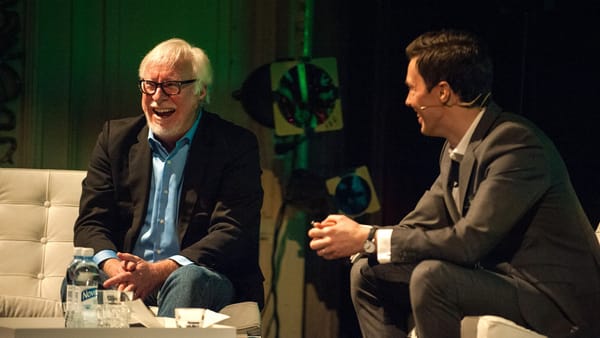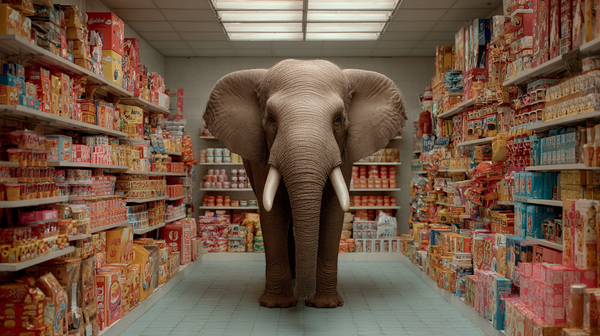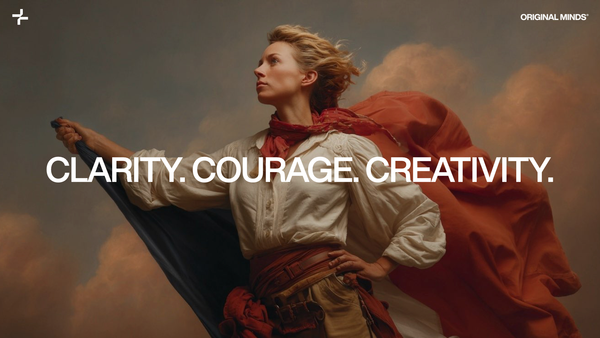For years, “branding” has been a ritual.
A company hires an agency.
The agency arrives in black turtlenecks.
Everyone nods gravely through a workshop about purpose, pillars, and archetypes.
A few months later, someone sends out Brand Guideline v.6 FINAL_FINAL_2b.pdf.
Inside: a handful of lofty sentences about “vision and values,” a few color swatches, and a 40-page instruction manual on where to place the logo.
And to be fair, these “brand books” were meant to combine strategy and design. But in practice, they reduced brand to visual identity — to the correct Pantone, the right typeface, and the sanctified grid.
Follow the rules. Respect the safe zone.
Congratulations, you’ve built a brand.
That world is dying.
Actually, it was always a terrible idea.
The Real Brand Is Bigger Than the Book
Logos and color palettes matter — but they’re a pixel in the larger picture.
A brand lives and breathes through five massive dimensions:
Products. Services. Environments. People. Communication.
Each one sends lots of powerful signals about who you are - together they form the experience and perception you have of a name we call a "brand". The brand is how "they" perceive you (the brand owners), as a result of everything you did, or did not do, and how you did it, or did not do it.
From the materials you choose to the way your receptionist greets a visitor, from your product packaging to your playlist at the customer lounge (please, no more pan-flute covers of My Heart Will Go On).
Every one of these touchpoints tells the world something about you — whether you plan it or not.
The Space Race of Branding
Culture now shifts weekly.
Technology rewires consumer behavior faster than your marketing calendar can update. Values, aesthetics, and expectations are in constant motion.
Yet most brands still operate on a static identity system designed for a slower world — a relic that tells people how to use a logo, not how to make decisions.
It’s like bringing a paintbrush to a space race.
"Brand" Is The Organizing Principle Of Business
The great brands, the ones who keep it together and align their brand strategy with the internal (people and culture) and external world (experience) are often able to turn their brand into a business multiplier.
One brand dimension reinforces the other, like a flywheel.
When is the last time you picked up a rental car?
I bet the experience was average at best, but more likely, dreadful.
Everything the brand did in the old-school way (brand strategy + visual identity + "branding" through their website and marketing campaigns was decent.
So you booked.
But then you arrived in Greece, or wherever, tired and hungrly after a long flight. Not only did they not have your car (Brand X, or similar, right...) you have to re-create the booking you already made in the comfort of your home. Only this time, your family is irritated, you wait for 30 minutes, and if you are lucky, things go sort of ok. At worst, it's a nightmare. Ask me how I know...
This is a systemic failure.
And this illustrates why brands need an operating system, not a linear process with a brand book + campaigns.
Enter AI and our world today.
The Operating-System Era
The next era of branding isn’t about consistency.
It’s about coherence through change.
A brand is no longer a museum of aging assets — it’s an operating system that senses, learns, and creates.
I call it BrandOS™ — an intelligent brand system that connects five layers into one continuous loop:
Intelligence → Strategy → Innovation → Experience → System.
- Intelligence feeds the brand with live signals from culture, technology, and markets.
- Strategy translates those signals into focus and narrative.
- Innovation turns strategy into new value — products, services, and experiences.
- Experience expresses the brand everywhere it lives - I call them The Five Brand Dimensions.
- System is the nervous system, the operating measures, learns, and feeds it all back.
This isn’t theory. It’s infrastructure — a living engine for brand growth.
The Shift Ahead
The brands that win the next decade will operate like adaptive systems, not design museums. They’ll integrate intelligence into their DNA, using live data, AI, and creativity to evolve continuously.
Their brand won’t sit in a folder — it’ll live in the organization’s bloodstream.
The future of brand strategy is not a book.
It’s a brain and a nervous system.
p.s Wanna build your BrandOS™
Want to implement AI to create "the brain", then have it turn signals into insights, ideas, opportunities, and actionable "plays" across the five brand dimensions?
Want it to help you supercharge the whole process, while keeping it coherent?
Let's talk.
EMAIL










